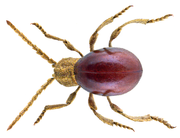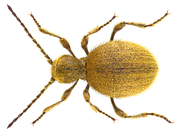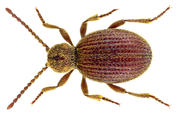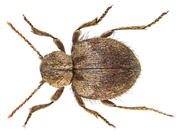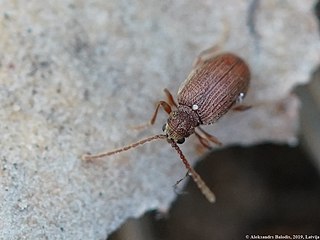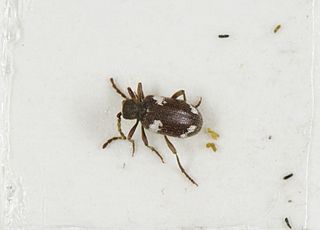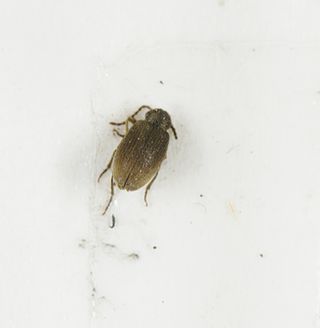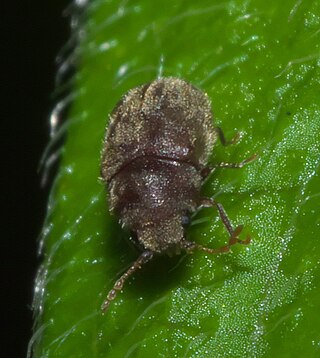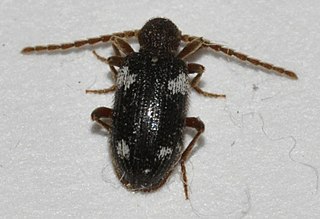| Ptininae, Spider beetle | |
|---|---|
 | |
| Niptus hololeucus | |
| Scientific classification | |
| Domain: | Eukaryota |
| Kingdom: | Animalia |
| Phylum: | Arthropoda |
| Class: | Insecta |
| Order: | Coleoptera |
| Superfamily: | Bostrichoidea |
| Family: | Ptinidae |
| Subfamily: | Ptininae Latreille, 1803 |

Spider beetles make up the subfamily Ptininae, in the family Ptinidae. There are approximately 70 genera and 600 species in the subfamily, with about 12 genera and 70 species in North America north of Mexico. [1] [2] [3] [4] [5]
Contents
Spider beetles have round bodies with long, slender legs. Many species are flightless, either in females only or both sexes. They are generally 1–5 mm long, and reproduce at the rate of two to three generations per year. They are so named because of a resemblance to spiders. Some species have long legs, antennae that can seem like an additional pair of legs, and a body shape that may appear superficially like that of a spider. [4]
The larvae and the adults of most spider beetles are scavengers on dry plant or animal matter, but some species are known to be myrmecophilic, or ant affiliates. [4]
The subfamily Ptininae, along with Anobiinae and several others, were formerly considered members of the family Anobiidae, but the family name has since been changed to Ptinidae. [5] [2] [3] [4] [1]


